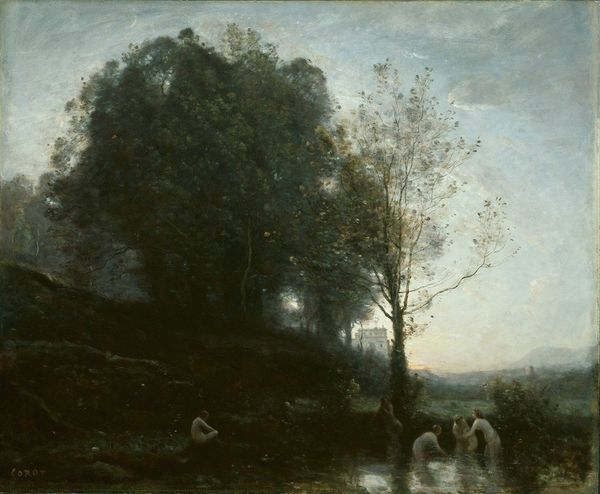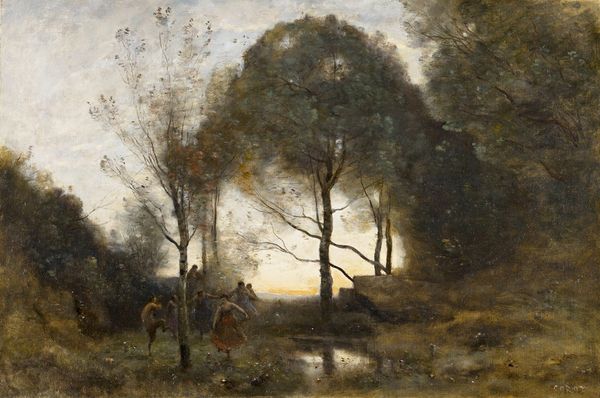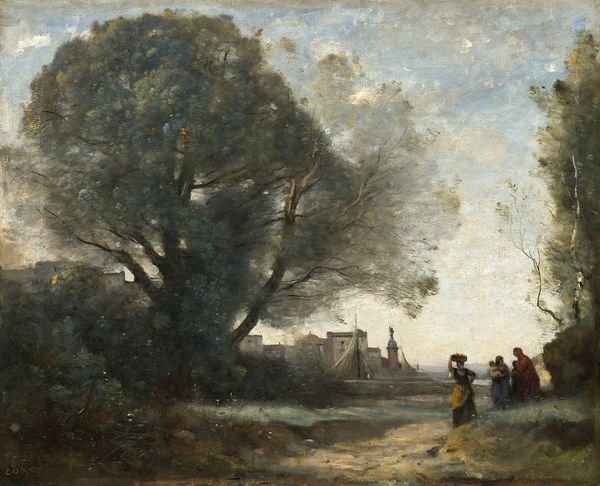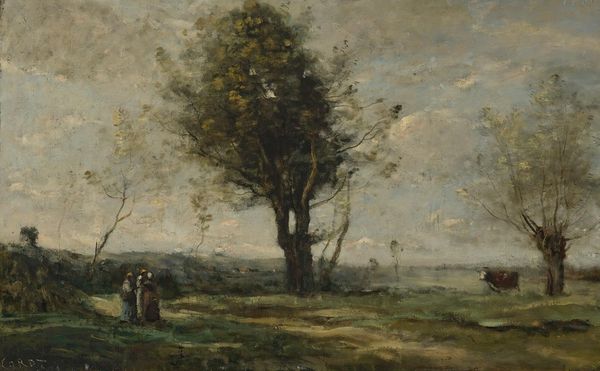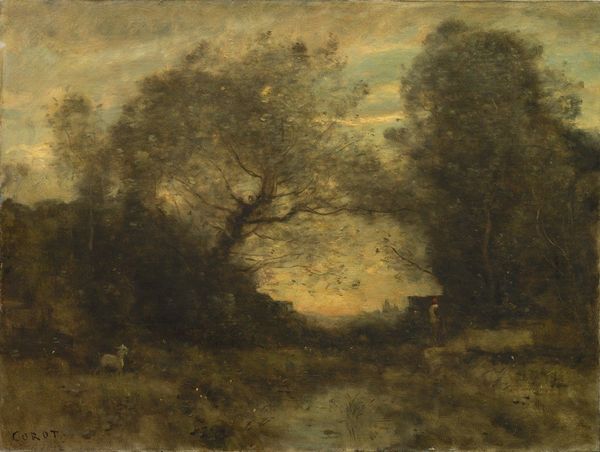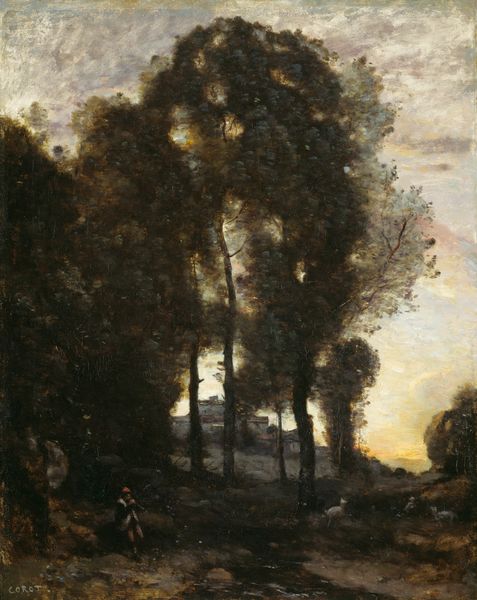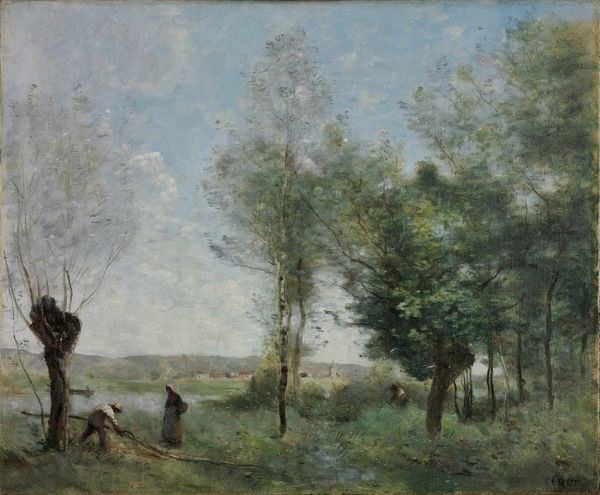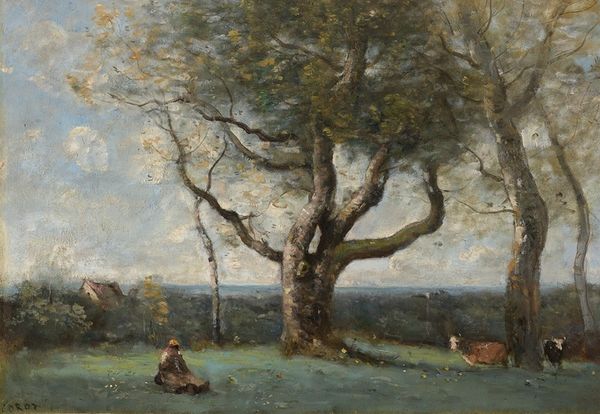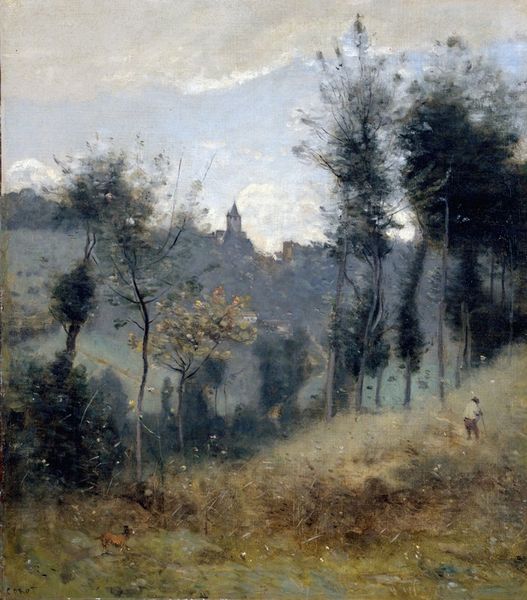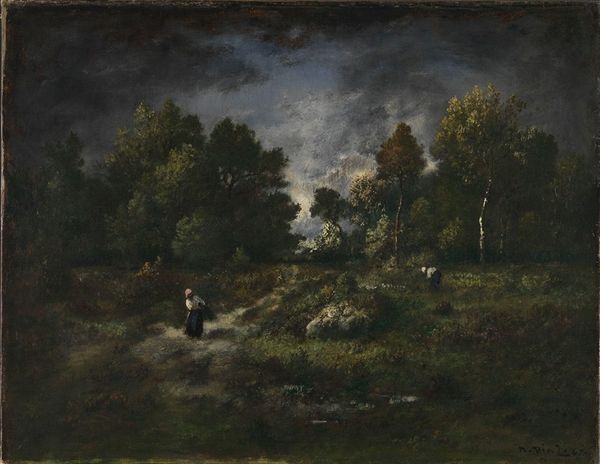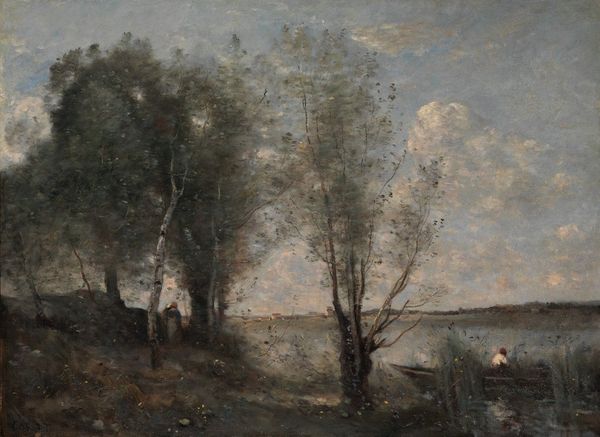
Copyright: Public Domain: Artvee
Editor: So, here we have "The Dance of the Nymphs," painted between 1865 and 1870 by Camille Corot, using oil paint. It’s got this hazy, almost dreamlike quality. It’s romantic. What grabs you when you look at it? Curator: What grabs me? Oh, where do I even begin with Corot? His landscapes aren’t just places, are they? They're feelings made visible, poems whispered in paint. It’s like he took a memory, frayed around the edges, softened by time, and splashed it onto the canvas. Do you feel the figures are an integral part of the painting? Editor: They're small, almost lost in the landscape. I guess I see them as part of it? Curator: Exactly! That blurring of the line between humanity and nature is very romantic, isn't it? These aren’t specific nymphs, identifiable figures. They’re echoes of joy, fleeting glimpses of beauty. For me, it’s almost an ode to the elusiveness of happiness itself. He gives us that hazy background and then contrasts that with a brighter area where you can more clearly make out figures. What do you think that does for the feel of the painting? Editor: It makes the nymphs stand out just a little more. It also creates a contrast, with the more brightly colored area pushing toward the viewer, heightening the depth effect and creating a focal point that guides you across the landscape to the horizon. Curator: Beautifully observed! It's almost as if Corot is inviting us to play hide-and-seek with beauty itself, or at least contemplate how wonderful it can be to just see it even for a moment. It has got me wondering about a dance in the fields, I feel a compulsion to join the fun, how about you? Editor: Definitely makes you want to escape into that landscape. Thanks for highlighting so many wonderful aspects of it!
Comments
No comments
Be the first to comment and join the conversation on the ultimate creative platform.
